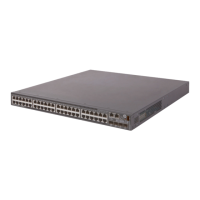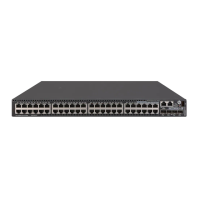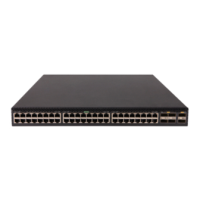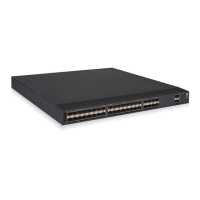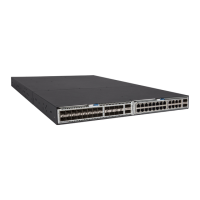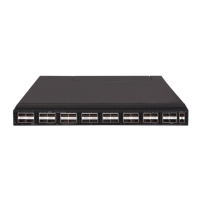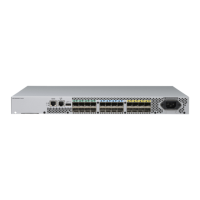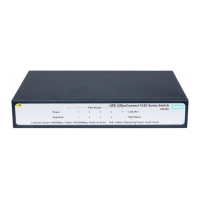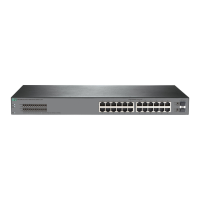164
Loop detection commands
display loopback-detection
Use display loopback-detection to display the loop detection configuration and status.
Syntax
display loopback-detection
Views
Any view
Predefined user roles
network-admin
network-operator
Example
# Display the loop detection configuration and status.
<Sysname> display loopback-detection
Loopback detection is enabled.
Loopback detection interval is 30 second(s).
Loopback is detected on following interfaces:
Interface Action mode VLANs
GigabitEthernet1/0/3 None 10
Table 34 Command output
Field Description
Action mode
Loop protection action:
• Block—When a loop is detected on a port, the device performs the
following operations:
{ Generates a log.
{ Disables the port from learning MAC addresses.
{ Blocks the port.
• None—When a loop is detected on a port, the device generates a log but
performs no action on the port.
• No-learning—When a loop is detected on a port, the device generates a
log and disables the port from learning MAC addresses.
• Shutdown—When a loop is detected on a port, the device performs the
following operations:
{ Generates a log.
{ Shuts down the port to disable the port from receiving or sending
frames. The device automatically sets the port to the forwarding state
after a time interval. Set the time interval by using the
shutdown-interval command (see Fundamentals Command
Reference).
VLANs VLANs to which the interface belongs and where loops are detected.
loopback-detection action
Use loopback-detection action to set the loop protection action on a per-port basis.
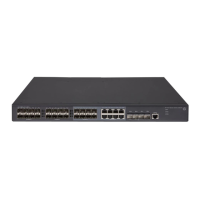
